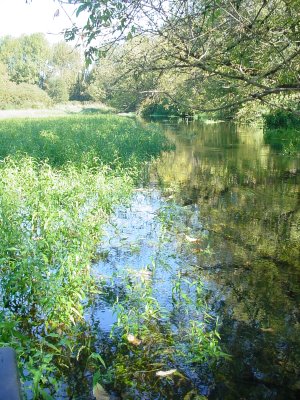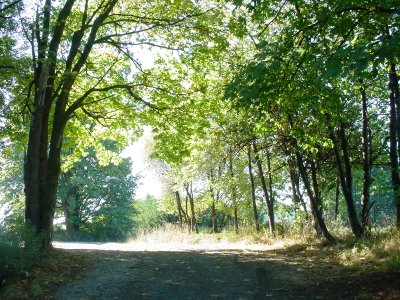I remember when we first took my sister along on a paddle on the Black River, and she said, "What is the gravest danger associated with this paddle?" She is a climber in Glacier Park, Montana, and is attuned to the hazards of every climb, of every step and reach, of weather, thirst, and the needs of the other climbers. She is attuned to constant hazards, like grizzly bears, rocks falling, or starting late which can mean coming down off a mountain at dusk, and finding one's way to base camp in the dark, with the need of headlamps to light the way. So, her question came from her own experiences.
 "About the only thing that can be unpredictable about this paddle this time of year," I said, "is hunters and dogs. Sometimes, a dog might hear a paddler, and if the water is low, he might come after us feeling mighty territorial. But, that's never happened yet. And, with hunting season about to open, we pay attention to bird blinds and stay out of hunting areas."
"About the only thing that can be unpredictable about this paddle this time of year," I said, "is hunters and dogs. Sometimes, a dog might hear a paddler, and if the water is low, he might come after us feeling mighty territorial. But, that's never happened yet. And, with hunting season about to open, we pay attention to bird blinds and stay out of hunting areas." As the weather starts to change from summer to autumn, as it is now, our desire was to find a new part of the river we'd not yet explored. All year long the Black River is a canoer's delight, with wide open areas that offer vistas of farmland, sometimes blanketed in early morning fog. At other times, the river narrows, into delicate, shallow passages, with wild mint, crows-feet, and forget-me-nots. Blue heron stand like statues, on logs extending out over the water, and the birdcalls are heavenly.
The river gets its name from the tannins in the water, turning the water black. It can look very spooky in winter, when wind and rain make it look inhospitable. With its slow current, it is never a problem to paddle, unless one paddles upriver through narrow channels lined with abundant aquatic plants - and that is what we experienced on our paddle on Sunday. It requires both of us to pull the canoe through, upwards into more gentle water.

This is the type of vegetation that can make for difficult paddling. When we pulled out of these mats of vegetation, we had to glide under overhanging trees along the edges and lay our heads down as we paddled under them. Eventually we found deeper water and open areas, bordered by farmlands and an old railroad trellis. The little roads meandering through the valleys are quite idyllic.

It was a mid-day paddle, in brilliant sunshine, and mid-70 temperatures - simply gorgeous out. I filmed our coursing through the shallow channels with brisk current as we drifted down through it, as George didn't need my help paddling, and I look forward to the video.
 I was able to capture the delightful swaying aquatic plants on the riverbottom. Tiny brown rocks with small snails lined the bottom of the channel, and everything was pristine due to the current. It made for wonderful clarity. Still shots came out poor due to the light, but I'll include them here, anyway.
I was able to capture the delightful swaying aquatic plants on the riverbottom. Tiny brown rocks with small snails lined the bottom of the channel, and everything was pristine due to the current. It made for wonderful clarity. Still shots came out poor due to the light, but I'll include them here, anyway.  This was the 'put in point', and beyond is a channel of the river that when I saw it I told George we've got to get Megan and Taraz here. We're giving them an Adirondack canoe as a wedding gift. It will be similar to ours, for touring, yet will have enough stability for fishing, photography, and other pursuits. Its steadiness doesn't extract a toll in paddling performance or rough-water capability, and it is a durable, light-weight canoe, easy to portage.
This was the 'put in point', and beyond is a channel of the river that when I saw it I told George we've got to get Megan and Taraz here. We're giving them an Adirondack canoe as a wedding gift. It will be similar to ours, for touring, yet will have enough stability for fishing, photography, and other pursuits. Its steadiness doesn't extract a toll in paddling performance or rough-water capability, and it is a durable, light-weight canoe, easy to portage. We want to break them into some of the gentle spots on the river, where it is shallow and lovely. This spot is perfect, with safe conditions, and about an hour's journey from Tacoma.